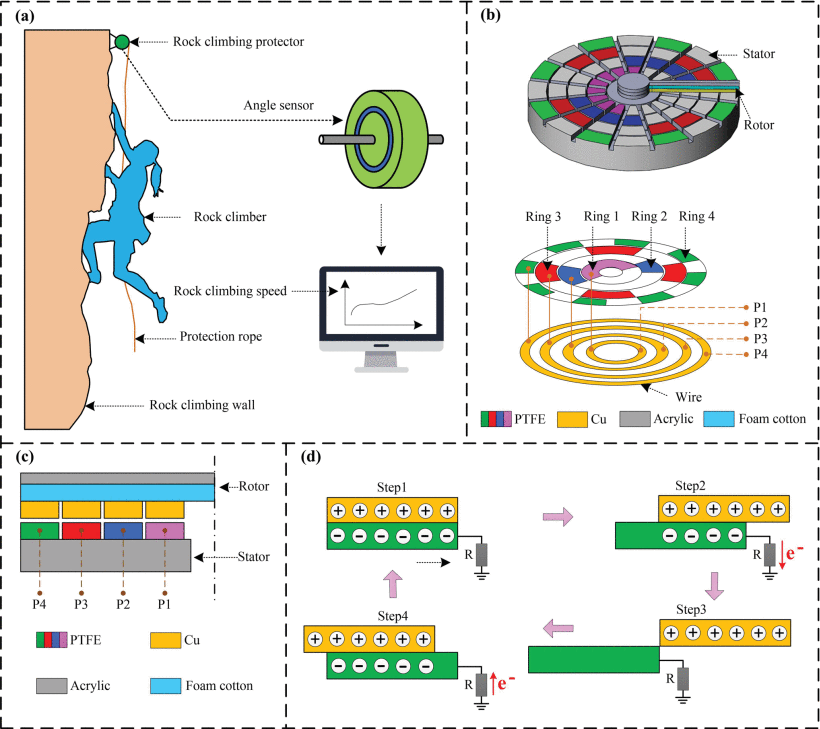Research on Self-Powered Coded Angle Sensor for Rock Climbing Training
Recent innovations in wearable technology are revolutionizing the world of rock climbing, providing climbers with game-changing tools to enhance safety and performance. These advancements include wristbands, health monitors, and even tiny drone cameras. The angle sensor is used to measure the real-time speed of the climbers during the training and wild climbing expeditions.
The paper explores the self-powered angle sensors based on triboelectric nanogenerators, potentially revolutionizing climbing speed measurement, enhancing safety, and eliminating cables. Researchers have extensively researched angle sensors and rotary encoders for speed measurements. The focus was on new designs and performance optimization, including image, capacitive, ultrasonic, and optical sensor types. The current cable-powered angle sensors in rock climbing also raise safety concerns due to cables.
The self-powered angle sensor consists of two main parts, a stationary stator and a rotating rotor. The stator has four rings with special materials called polytetrafluoroethylene (PTFE) electrodes. These rings are divided into sections, and wires are connected to them. The rotor, which rotates, has a copper layer and a foam layer acting as a cushion.
The sensor operates on the triboelectric effect, generating electrical charges through friction between PTFE on the rings and copper on the rotor as it moves. These charges translate into electrical pulses, functioning like signals that play a vital role in identifying contact points between the stator and rotor. To gauge climbing angles, the stator comprises four rings with different PTFE surface areas. When the rotor rotates, pins connected to these rings emit sequences of 0s and 1s (representing high and low levels) corresponding to the PTFE contacts, allowing a microcontroller to measure the climbing angle accurately.
The sensor computes the length of the climbing rope in motion within the sensor and considers the drum's diameter to determine climbing speed. The speed is calculated by utilizing this data alongside the angle information. This functionality proves invaluable for coaches as it assesses athletes' performance in real-time.
For testing, the sensor was connected to a motor, with precise control over the motor's rotation angle and speed via a controller to simulate sensor motion. The sensor's output signal underwent processing using specialized equipment, and subsequent data analysis was done using software.
In the assessment, the sensor demonstrated the ability to produce a continuous electrical pulse with an approximate voltage of 3.5 volts. Increasing the circuit resistance yielded higher output voltage, reaching a maximum power output of approximately 9.5 x 10-7 watts at a resistance level of 106 W.
Also, the rotation speed tests confirmed accurate measurement, with current output increasing with speed. Angle measurement accuracy stood at 22.5 degrees. The reliability tests found errors below 5%, enduring varied temperatures and humidity, showing consistent long-term reliability.
The comprehensive tests emphasize the self-powered coded angle sensor's ability to accurately measure angle and rotation speed. It also generates power, thus making it a promising device for rock climbing. Future research aims to improve accuracy without increasing size and seek methods to generate additional power for other climbing gear to enhance its capabilities.




